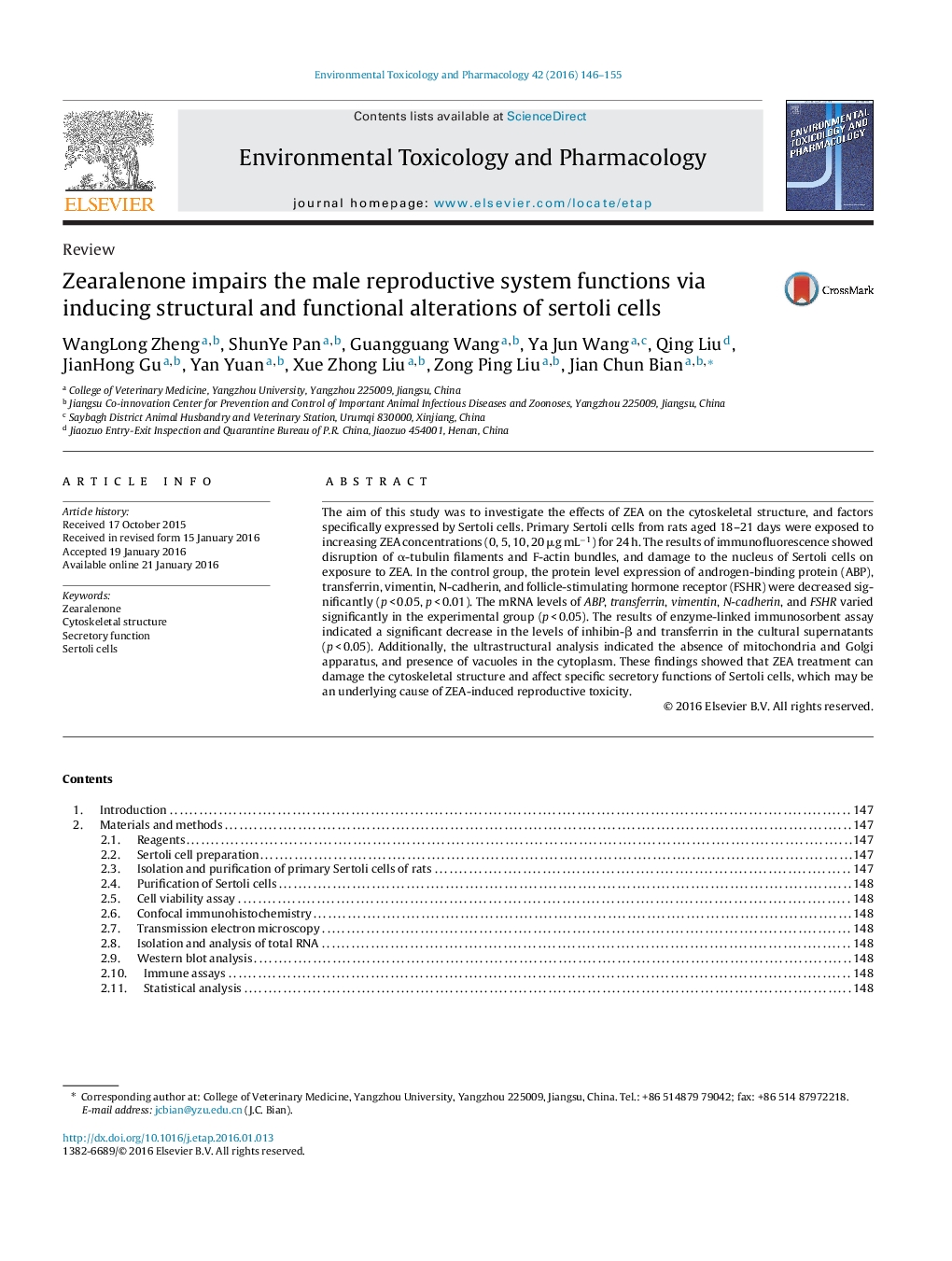| Article ID | Journal | Published Year | Pages | File Type |
|---|---|---|---|---|
| 5848664 | Environmental Toxicology and Pharmacology | 2016 | 10 Pages |
Abstract
The aim of this study was to investigate the effects of ZEA on the cytoskeletal structure, and factors specifically expressed by Sertoli cells. Primary Sertoli cells from rats aged 18-21 days were exposed to increasing ZEA concentrations (0, 5, 10, 20 μg mLâ1) for 24 h. The results of immunofluorescence showed disruption of α-tubulin filaments and F-actin bundles, and damage to the nucleus of Sertoli cells on exposure to ZEA. In the control group, the protein level expression of androgen-binding protein (ABP), transferrin, vimentin, N-cadherin, and follicle-stimulating hormone receptor (FSHR) were decreased significantly (p < 0.05, p < 0.01). The mRNA levels of ABP, transferrin, vimentin, N-cadherin, and FSHR varied significantly in the experimental group (p < 0.05). The results of enzyme-linked immunosorbent assay indicated a significant decrease in the levels of inhibin-β and transferrin in the cultural supernatants (p < 0.05). Additionally, the ultrastructural analysis indicated the absence of mitochondria and Golgi apparatus, and presence of vacuoles in the cytoplasm. These findings showed that ZEA treatment can damage the cytoskeletal structure and affect specific secretory functions of Sertoli cells, which may be an underlying cause of ZEA-induced reproductive toxicity.
Keywords
Related Topics
Life Sciences
Environmental Science
Health, Toxicology and Mutagenesis
Authors
WangLong Zheng, ShunYe Pan, Guangguang Wang, Ya Jun Wang, Qing Liu, JianHong Gu, Yan Yuan, Xue Zhong Liu, Zong Ping Liu, Jian Chun Bian,
